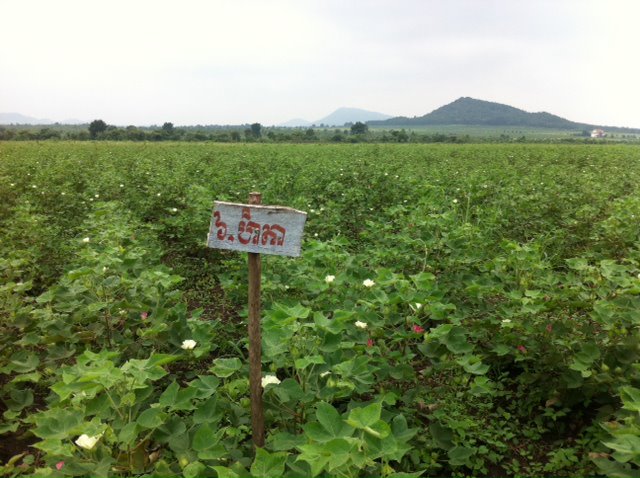
As I communicate with Mr. Visal, the Cambodian local, day in and day out, I realize that, in essence, we are only talking about the weather and the condition of the soil. Instead of spraying defoliants at the end of the harvest, as is done with American and Australian cotton, each cotton is picked by hand, and this alone is a considerable reduction in pesticides. While 20% to 25% of the world's pesticides are used in cotton cultivation, Cambodian cotton is harvested by hand, which is very important. As swamps are used for cooking, washing, and playing, it is ethically unacceptable to use large amounts of pesticides in the vicinity of these swamps. I believe that the products grown with a commitment to organic farming are truly a "gift from the sky and the earth. From the point of view of cotton, which is slowly nurtured in the great rhythm of nature, the people who oversee the work in the field, fretting about rain and insects, may seem even more peculiar.
Oct 21, 2011 3:08:44PM
The Cambodia Cotton Club Project is a project that proceeds based on your input. Four years after our first activity of cotton cultivation in a landmine-contaminated area, we are finally starting to get up and running as an organization. http://www.cambodia-cotton.or.jp/ In the meantime, social media also developed and Facebook and Twitter were created. http://www.facebook.com/CambodiaCottonClub https://twitter.com/#!/CambodiaCotton We are not very good at what we do, but we are now connected with people who are willing to do a full-fledged cleanup of the negative legacy of the 20th century. This blog was originally written when I was working as an individual, but since the contents have been split into two blogs, I am republishing them in chronological order. This is an ongoing project that is still in a state of exploration, so we ask for your kind attention and guidance. Please note that this is not the unified view of the organization, as it contains the personal thoughts and feelings of the local representative, but we decided to post it here to help you understand how things have been going so far. We hope you will find it useful. We look forward to continuing to talk with many of you as we move forward with the project.
Updated on Oct 22, 2011 5:16:14AM
The water receded, but upon closer inspection, I found that about 20% of the cotton trees were suffering from kappan disease (a disease that causes the leaves to turn brown, and the plants are unable to photosynthesize). (a disease that causes the leaves to turn brown and lose their ability to photosynthesize). Of course, not all the leaves, so I sprayed organic materials (my own blend) and neem materials that have disinfecting properties. However, the field is like a sludgy swamp, and we are having difficulty. We are trying various methods, because if the dilution rate is wrong, it will have the opposite effect. I think in another 10 years, we will have accumulated a lot of know-how, but first, let's see what we can do this year.... I seriously want a Yamaha agricultural helicopter. I don't think there is a better piece of farm equipment for farming in a minefield than that. However, it could easily be converted into a weapon (spraying poison gas), so it needs to be approved by METI. This is also a lot of work.....
Oct 22, 2011 3:13:20PM
